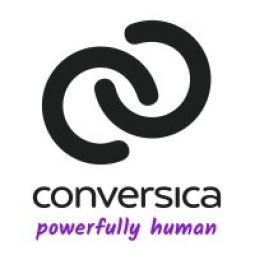Technology Category
- Application Infrastructure & Middleware - Event-Driven Application
- Sensors - Autonomous Driving Sensors
Applicable Industries
- Automotive
- Healthcare & Hospitals
Applicable Functions
- Sales & Marketing
Use Cases
- Time Sensitive Networking
- Usage-Based Insurance
About The Customer
OEConnection is a leading provider of data, software, and services to the automotive industry, helping to drive OEM parts sales. The company has a robust Customer Success team with more than 20 representatives in North America, each managing between 500 and 1,000 dealers. The team is divided into different territories and functions, with Onboarding Reps helping new customers get acquainted with the products and services, and Optimization Reps (or Account Managers) managing customer health and product usage to drive better outcomes.
The Challenge
OEConnection, a provider of data, software, and services to the automotive industry, was facing challenges in scaling its Customer Success team and enhancing customer engagement. The company had over 20 Customer Representatives in North America, each managing between 500 and 1,000 dealers. The primary methods of customer engagement were emails and phone calls, which proved to be time-consuming and often ignored by customers. The company categorized its customers into three groups based on usage, and the outreach strategy for each group was different. However, this manual outreach was not only labor-intensive but also resulted in low engagement, especially from customers who needed the most attention.
The Solution
To address these challenges, OEConnection implemented Conversica AI Assistants for Customer Success. The company had been using Conversica's Conversational AI for its Sales team since January 2018 and decided to leverage it for scalable outreach and higher customer engagement. The AI Assistant, named Jenna Grant, was used for various purposes such as scheduling reviews with customers, addressing low usage, reaching out to at-risk customers, reminding customers to use certain features, and communicating with customers at risk of canceling. This solution allowed OEConnection to manage their customer count without hiring any new employees. The AI Assistant sent out personalized emails to thousands of dealerships on behalf of the team, enabling Customer Representatives to have more productive conversations and spend more time driving customer health.
Operational Impact
Quantitative Benefit

Case Study missing?
Start adding your own!
Register with your work email and create a new case study profile for your business.
Related Case Studies.

Case Study
Integral Plant Maintenance
Mercedes-Benz and his partner GAZ chose Siemens to be its maintenance partner at a new engine plant in Yaroslavl, Russia. The new plant offers a capacity to manufacture diesel engines for the Russian market, for locally produced Sprinter Classic. In addition to engines for the local market, the Yaroslavl plant will also produce spare parts. Mercedes-Benz Russia and his partner needed a service partner in order to ensure the operation of these lines in a maintenance partnership arrangement. The challenges included coordinating the entire maintenance management operation, in particular inspections, corrective and predictive maintenance activities, and the optimizing spare parts management. Siemens developed a customized maintenance solution that includes all electronic and mechanical maintenance activities (Integral Plant Maintenance).

Case Study
Hospital Inventory Management
The hospital supply chain team is responsible for ensuring that the right medical supplies are readily available to clinicians when and where needed, and to do so in the most efficient manner possible. However, many of the systems and processes in use at the cancer center for supply chain management were not best suited to support these goals. Barcoding technology, a commonly used method for inventory management of medical supplies, is labor intensive, time consuming, does not provide real-time visibility into inventory levels and can be prone to error. Consequently, the lack of accurate and real-time visibility into inventory levels across multiple supply rooms in multiple hospital facilities creates additional inefficiency in the system causing over-ordering, hoarding, and wasted supplies. Other sources of waste and cost were also identified as candidates for improvement. Existing systems and processes did not provide adequate security for high-cost inventory within the hospital, which was another driver of cost. A lack of visibility into expiration dates for supplies resulted in supplies being wasted due to past expiry dates. Storage of supplies was also a key consideration given the location of the cancer center’s facilities in a dense urban setting, where space is always at a premium. In order to address the challenges outlined above, the hospital sought a solution that would provide real-time inventory information with high levels of accuracy, reduce the level of manual effort required and enable data driven decision making to ensure that the right supplies were readily available to clinicians in the right location at the right time.











